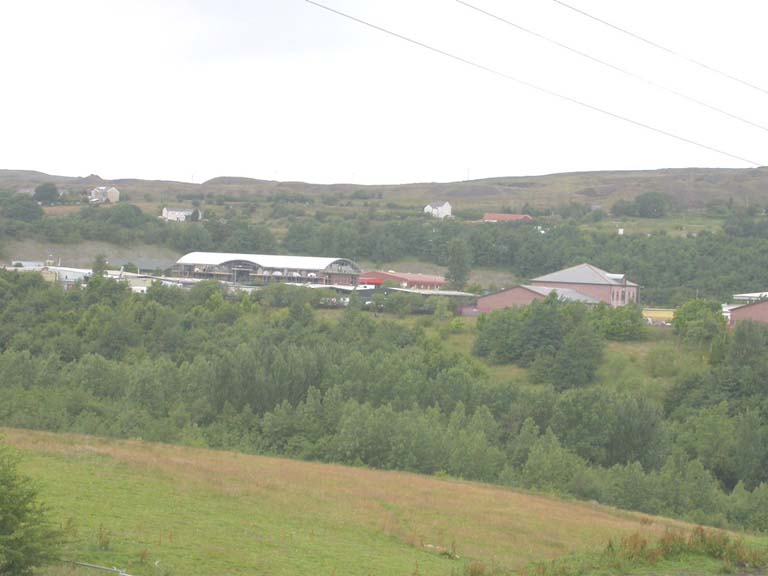Blaenavon
HLCA 021 West Blaenavon Industrial Estates

HLCA 021 West Blaenavon Industrial Estates
Area characterised by modern industrial estates. Previously dominated by collieries and associated buildings, industrial terraced rows and tramroad links. Buried archaeological remains. Back to map
Historic Background
The historic landscape area of West Blaenavon Industrial Estates comprises an area given over to modern industrial estate development. During the medieval period the area formed part of the core settlement for which rental increment was charged this is thought to be a survival of the early medieval gwestfa rent. However, in the post-medieval period, the area was increasingly used for industrial extraction, with workers' housing constructed to fill the requirements of the emerging ironworks at Blaenavon.
An important feature still surviving in the area are the Old Coal Pits (SAM: MM293), two of the oldest colliery shafts in the Blaenavon Ironworks mineral field, probably dating from the 1790s. From 1863 they ventilated the workings of Cinder Pit. In their earlier phase, the winding gear at the Old Coal Pits is believed to have been powered by water power, the associated dry reservoir lies on the other side of the road to the north-west of the site (outside the scheduled area). Their circular form and pairing suggests that they were driven by waterwheel rather than a water-balance system. The shafts are lined in stone within a few feet of the top, above which they are brick, and are understood to be 235ft (71.63m) deep.
Another extractive site of significance is Engine Pit (SAM: MM277), the first shaft mine in the Blaenavon area, probably sunk around 1806 and certainly before 1812. By 1819 it had become significant as the drainage mechanism, which permitted the use of water-balance operated coal and iron ore slopes and shafts throughout the area. A single unlined vertical shaft a second offset at the bottom as a drainage sump. This shaft was drained by a waterwheel and pump rods to a beam below the ground, shown on a section of 1824. Later, beam engines were installed both on the surface and at the top of the lower lift, the latter of which is believed to survive below ground. Photographs show the shaft in good condition in 1976. At the surface, there are upstanding retaining walls and foundations, cast iron pump pipes, and cast iron bed plates for an engine on carved sandstone corbels. There is considerable archaeological potential for study of the waterwheel and engine arrangements. An exceptionally large level lies in the bank above the shaft, and Engine Pit Row formerly lay immediately to the southeast. Of national importance, this site is historically significant as an early drainage shaft associated with Blaenavon Ironworks, with good documentation and high archaeological potential.
Other workings in the area included Forge Level, Old Slopes, Thomas Water level and River Row middle level and Lower Brick Works. A tramway ran through this area linked to the earlier ironworks and later to the ironworks at Forgeside. Some of the earliest workers' housing associated with the Blaenavon Company was constructed in this area. Early nineteenth century houses (c1810) were built at Stable Yard in a trapezoidal arrangement. Also from this date are Engine Pit Row, River Row and Lower Brick Works Cottages. The company standard plan was adopted fro houses from the 1820s when Lower New Rank was constructed. During the 1830s more housing was constructed under the management of James Ashwell, this included Victoria Row and Chapel Row, Wesley Chapel at the centre of the row; the latter built by Thomas Deakin. Other houses built in the area around this time are Pond Houses and Ten Houses. By the end of the century only Chapel Row, Victoria Row, Ten houses, Pond Houses and Lower New Rank survived.
By the 1920s Victoria Row, Chapel Row and Lower New Rank were part demolished, the others having been completely destroyed to make way for the expansion of the then Blaenavon Iron and Steel Works. The area surrounding the works and houses was still heavily tipped on by the 1960s and the remaining buildings were finally completely demolished in the 1970s when tips were cleared and subsequently industrial estates were developed.